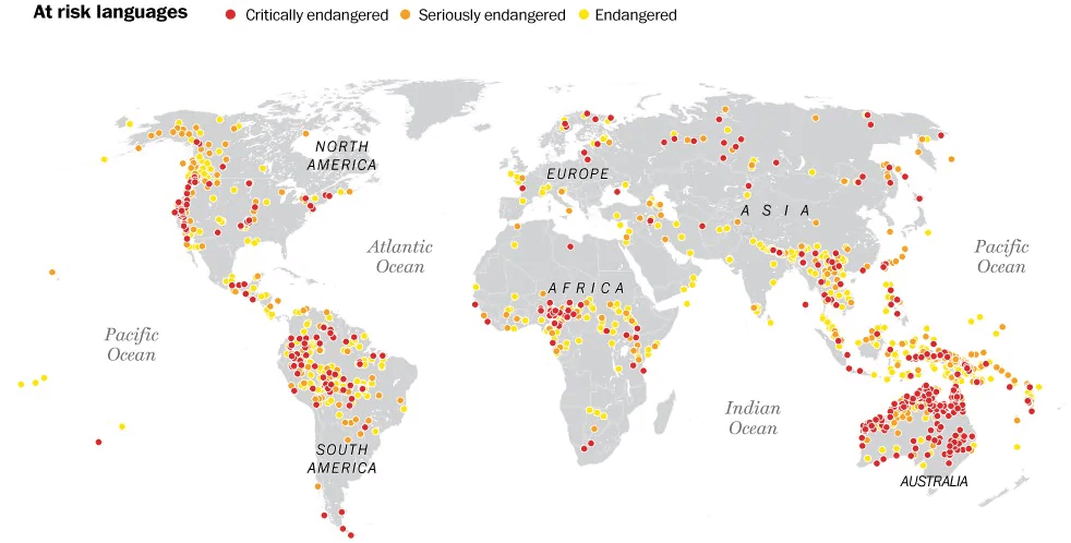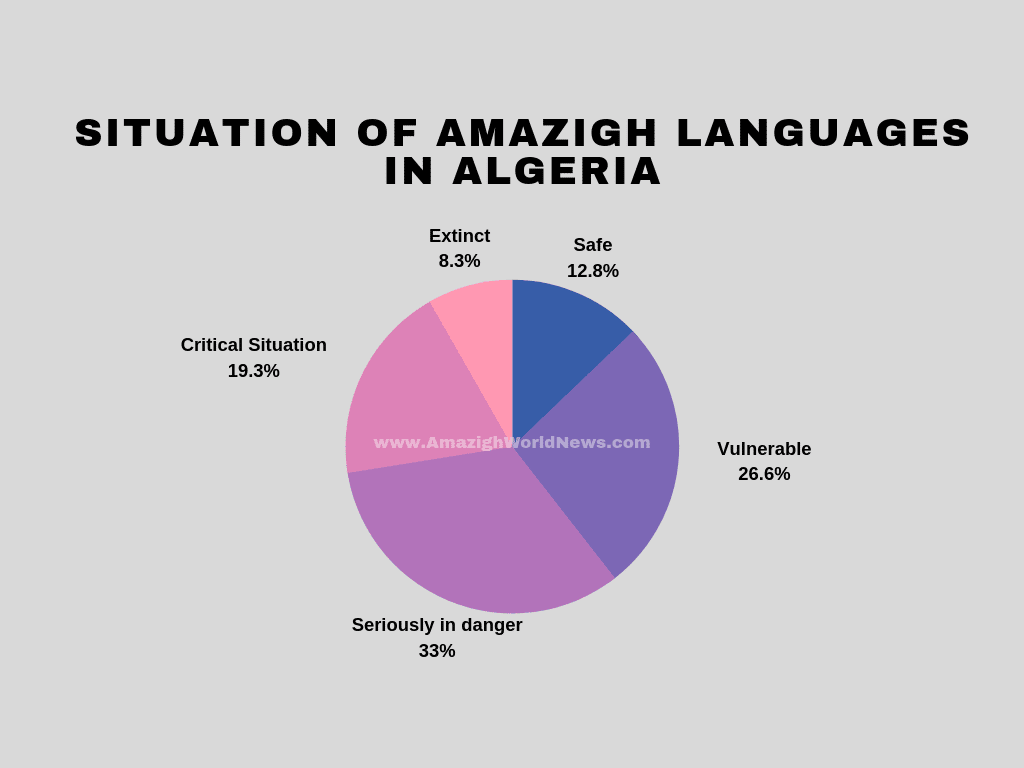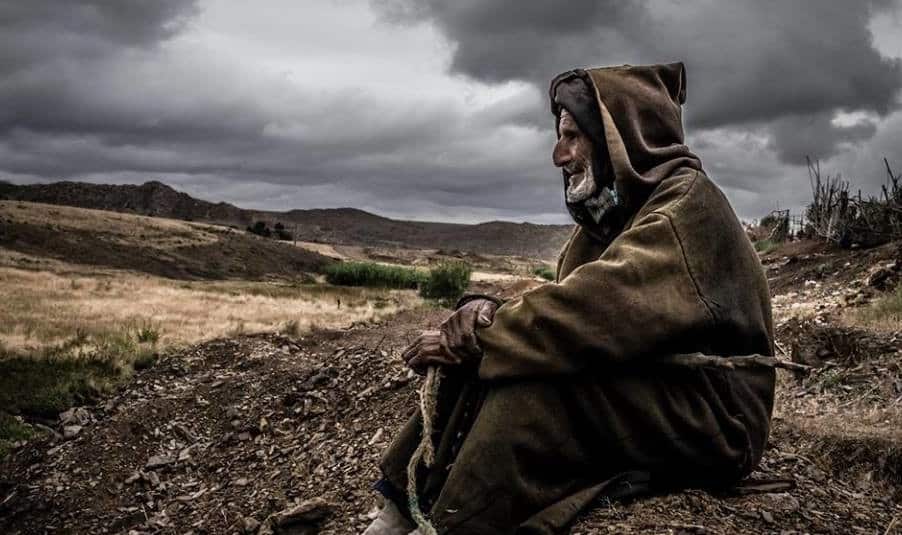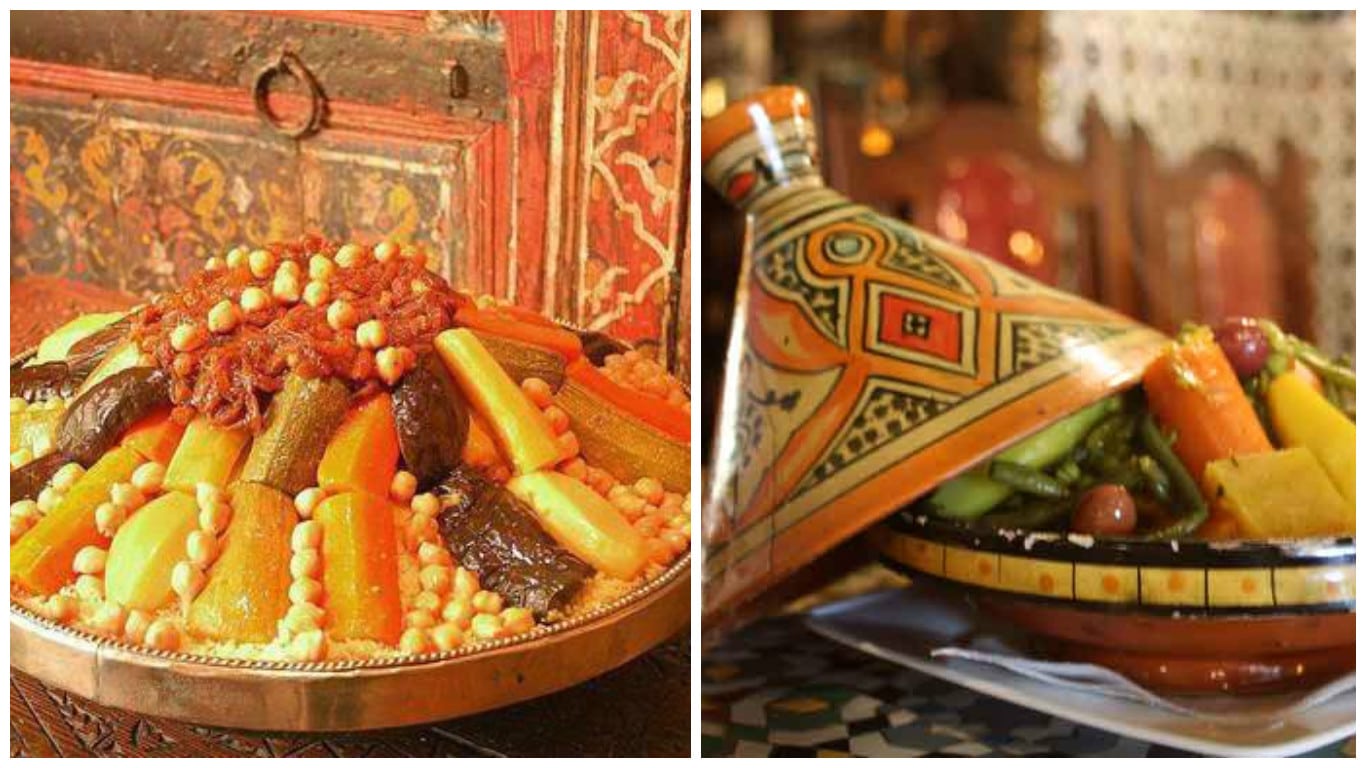When we look at the map of languages in danger in the world , we say to ourselves: we are not worse than elsewhere; it is not a question of comparing countries or continents, because we are all in the negative. Let’ s consider this analogous case: you have just passed a course exam with a passing grade of 60% and all students obtained scores ranging from 0% to 40%. And you try to find some satisfaction because you are in the average of the group.

The result is that all students will have to repeat the course a second time. Unfortunately, for the mother tongues, one does not always have the possibility to re-do. However, I am moving away from the question raised above and I think it is important to put faces on these Amazigh, our brothers and sisters, who risk becoming orphans of their mother tongue.

Languages that are in a critical situation are languages that will probably be extinct in twenty-five years.
• Tidikelt is the Amazigh language of the inhabitants of the south-central region of Algeria where the town of In-Salah and several other oases are located. The population is estimated at less than 60,000 people.
• Tamazight of Arzew is spoken south of the city of Oran and in the bay of Arzew. This population of the northwestern Algeria is estimated at 2000 people.
• Zenatiya is the language spoken by the inhabitants of the region of Ouarsenis including the town of Tissemsilt located in the center north of Algeria, to the west of the capital Algiers. The population is estimated at 50,000 people.
Languages that are seriously at risk are languages that will be extinct approximately in fifty years.
• Taznatit or Tamazight of Gourara (or Touat) is the language of the inhabitants of the region of the central south Algeria including the cities of Timimoune, Adrar and Tamentit. The population is estimated at 400,000 people.
• Korandje, a hybrid language of Tamazight and Songhey, is spoken by the inhabitants of Tabelbela oasis in the town of Bechar in south-western Algeria. The population is estimated at 3,000 people.
• Tagargrent or Tamazight of Ouargla is the language of the inhabitants of the southern cities of of Algeria, Ouargla and Ngaous. The population does not exceed 15,000 people.
• Touggourt is the language of the inhabitants of the southeastern region of Algeria comprising the cities of Touggourt, Temacine, Meggarine, Ghora, Tamellaht, Blidet-Amor, Tébebest and Tamast. The population is between 8,000 and 10,000 people.
• Tasnusit is spoken by the inhabitants of the region of Beni-Snous of the city of Tlemcen in the northwest of Algeria. There are no reliable statistics on this population, which cannot exceed 1,000 people.
Languages that are in a vulnerable situation: these are languages that can be extinct in a century.
• Tamahaq (or Tahaggart) is the language of the inhabitants of the deep south-eastern region of Algeria (Ahaggar and Ajjer) where the towns of Tamanrasset and Djanet are located. The population is estimated at between 110,000 and 140,000 people.
• Tamzabit is spoken by the inhabitants of the M’ Zab region of south-central Algeria, where the towns of Ghardaïa, Beni-Isguen, El-Ateuf, Mélika, BouNoura, Berrian and Guerrara. The population is estimated at 150,000 people.
• Tayurayt (or Tamazight n Iyurayen) is spoken by the inhabitants of the Gouraya region and its surroundings (west of Cherchell) and the town of Tipasa in northern Algeria just west of the capital Algiers. The population is estimated at 15,000 people.
• Tacenwit is spoken by the inhabitants of the region of Cherchell and the town of Tipasa to the west of the capital Algiers on the north coast of Algeria. This is where the Mount Chenoua, Nador, Bou Ismaïl, Hamadia, Damous, Larhat, Marceau, Sidi Amar, SidiMoussa, Ain Tagouirt and Tenes. The population is estimated at less than 80,000 people, and perhaps half of the population still speak the language.
In Algeria, if there is no real management of the Amazigh languages by the State, which is not the case at the present time, in 50 years there will remain only six languages out of the fourteen and in a century, there will only remain two. One can easily imagine in what situation they would be.[ads2]

















